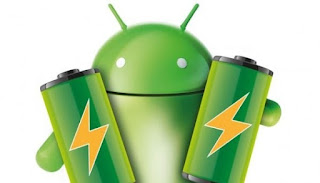Here are some effective battery-saving tips for Android devices:
1. Reduce Screen Brightness
- Auto-Brightness: Enable auto-brightness (Adaptive Brightness) so the phone adjusts screen brightness based on your environment.
- Manually Lower Brightness: If you don’t want to use auto-brightness, manually reduce the screen brightness in the settings or from the quick settings menu.
2. Use Battery Saver Mode
- Enable Battery Saver (found in Settings > Battery) to reduce power consumption. This mode typically limits background activities, reduces performance, and dims the screen.
3. Disable Unnecessary Background Apps
- Close apps that you're not using to prevent them from running in the background.
- Use Settings > Battery > Battery Usage to identify power-hungry apps and either limit or uninstall them.
4. Turn Off Connectivity Features
- Wi-Fi: Turn off Wi-Fi when you’re not connected to a network or if you're not using it.
- Bluetooth: Disable Bluetooth if you're not using it (e.g., when not connected to a speaker or headphones).
- Mobile Data: Turn off mobile data when you don’t need it.
- GPS/Location Services: Turn off location services when not necessary, or adjust the settings to use only when specific apps need it.
- NFC: Turn off NFC if you’re not using it for contactless payments.
5. Limit Background Syncing
- Sync Settings: In Settings > Accounts > [Your Account], disable background syncing for apps you don’t need to update constantly (e.g., email, social media).
- App-Specific Sync: Some apps allow you to adjust sync frequency or turn off syncing entirely, like Gmail, Google Photos, etc.
6. Use Dark Mode
- Many Android phones have an AMOLED or OLED display, which saves battery in Dark Mode because pixels turn off in dark areas of the screen. You can enable this in Settings > Display > Dark theme or through quick settings.
7. Limit Push Notifications
- Turn off non-essential notifications or set apps to fetch data less frequently (especially for social media, email, and news apps).
8. Disable Vibrations
- Turn off vibration feedback for notifications, calls, and key presses to save battery. Go to Settings > Sound > Vibration to adjust settings.
9. Manage App Notifications
- Settings > Apps & Notifications lets you fine-tune which apps can send notifications. Reducing notifications can prevent apps from waking up your phone frequently.
10. Update Apps & Software Regularly
- Keep your apps and system software updated, as newer versions are often optimized for better performance and battery efficiency.
11. Use Power-Hungry Features Sparingly
- Features like Live Wallpapers, Widgets, and Always-on Display consume extra power. Use them sparingly or turn them off completely.
12. Use Adaptive Battery
- Adaptive Battery (found under Settings > Battery > Adaptive Battery) limits battery usage by restricting background activity for infrequently used apps.
13. Uninstall or Disable Bloatware
- Some pre-installed apps may run in the background and consume resources. You can disable or uninstall these apps through Settings > Apps.
14. Limit High-Power Apps
- Apps like games, streaming, or video calls consume a lot of power. Try to limit usage or reduce their frequency.
15. Enable Airplane Mode (If Needed)
- If you don’t need your phone to connect to networks or if you’re in an area with poor signal, enable Airplane Mode to conserve power.
By applying some of these tips based on your usage patterns, you should see a noticeable improvement in your Android device's battery life.





0 Comments